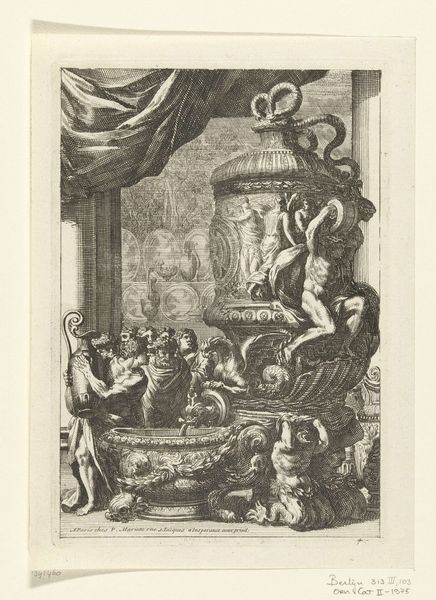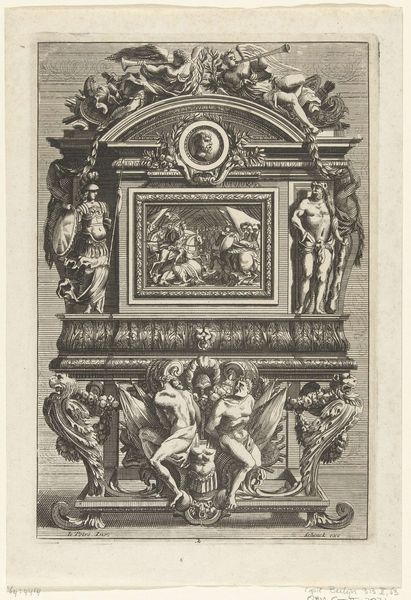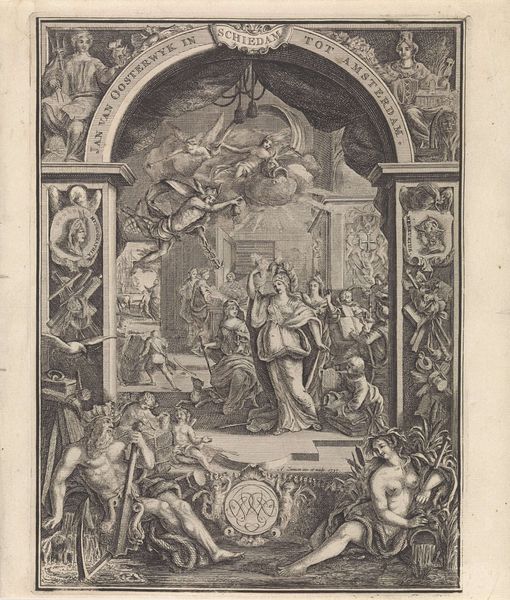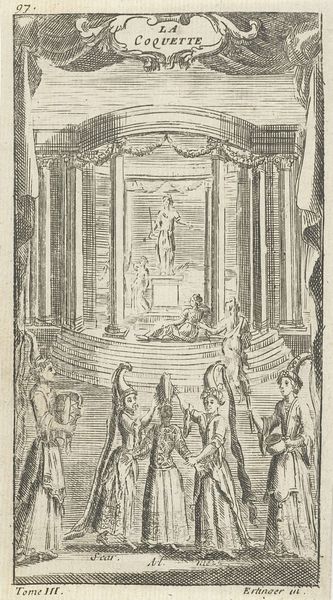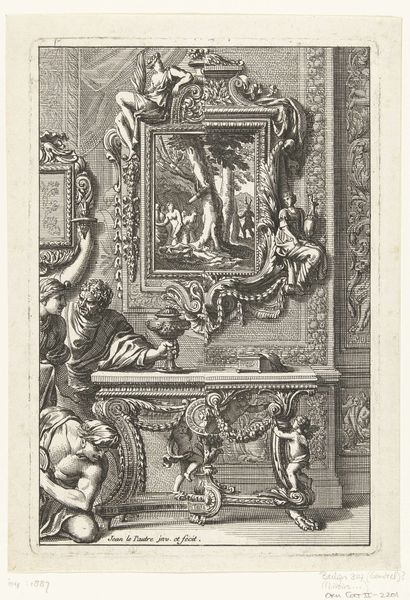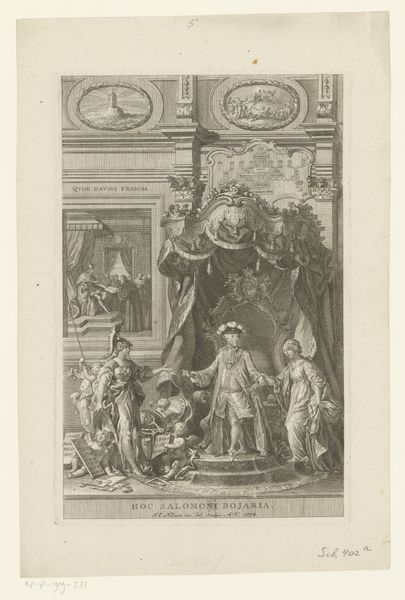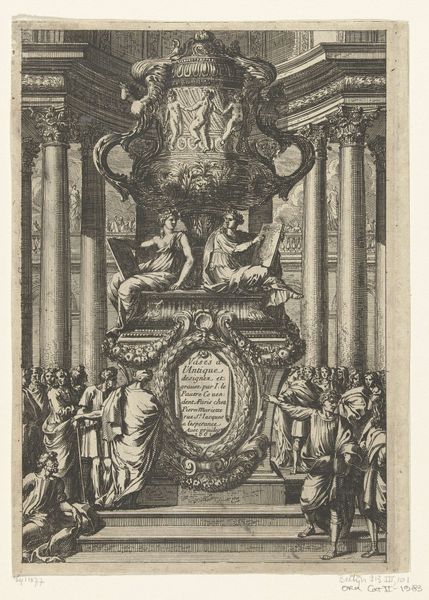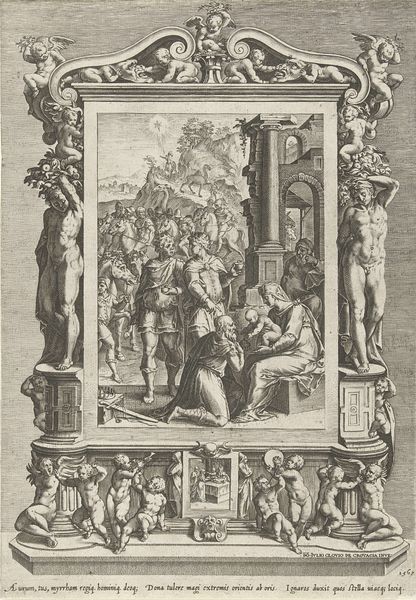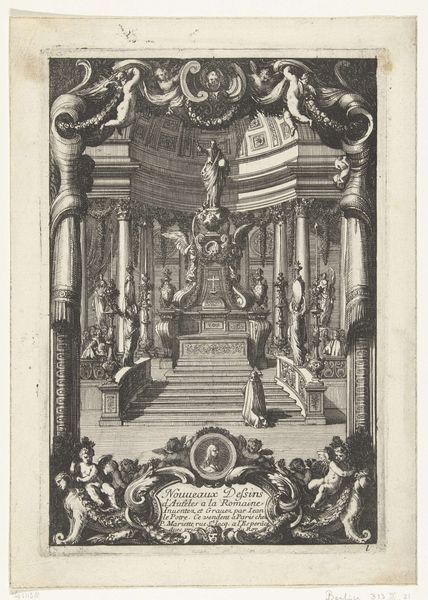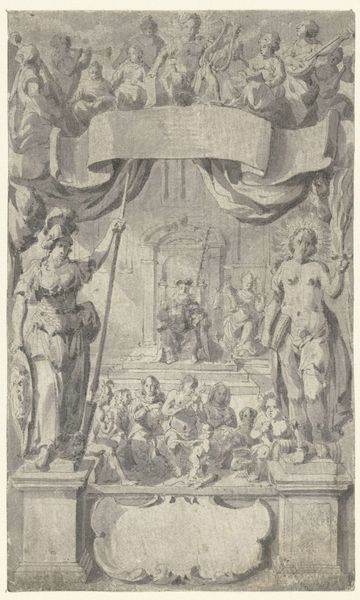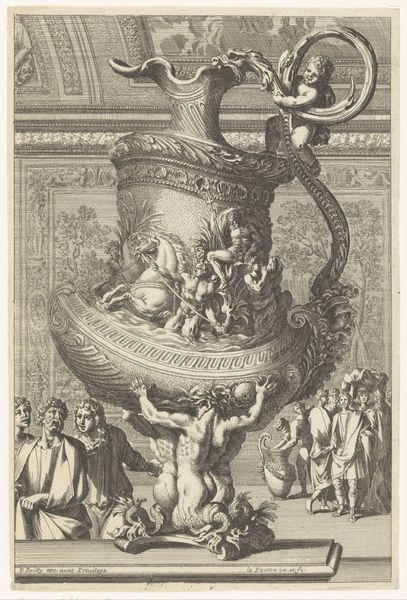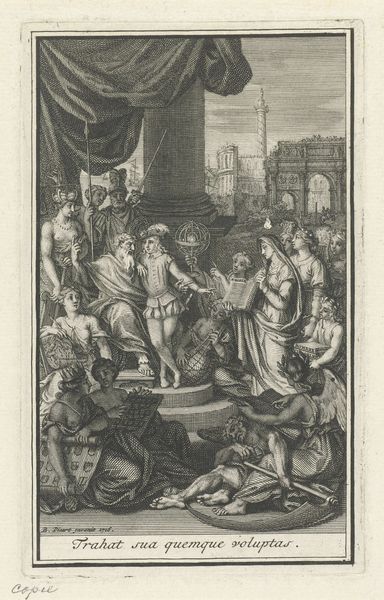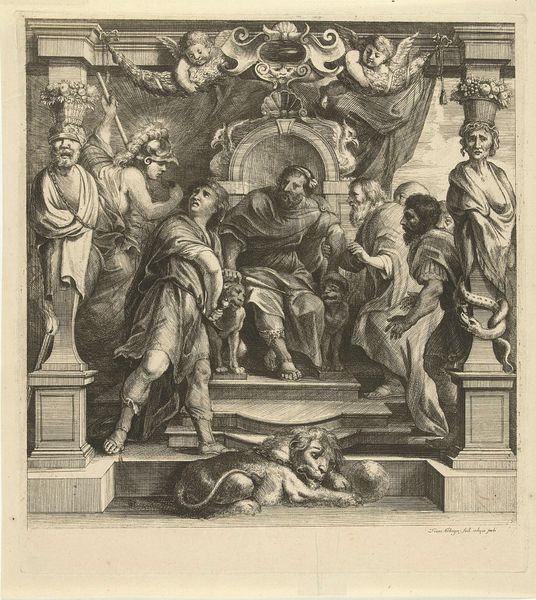
print, engraving, architecture
#
baroque
#
pen drawing
# print
#
old engraving style
#
geometric
#
cityscape
#
history-painting
#
engraving
#
architecture
Dimensions: height 247 mm, width 158 mm
Copyright: Rijks Museum: Open Domain
Curator: Good morning. We’re standing before Jean Le Pautre's engraving, "Titelblad: Fonteines et Cuuettes," dating from about 1657 to 1661. It's a fascinating example of Baroque printmaking from the Rijksmuseum collection. Editor: My initial impression is one of controlled chaos. There's so much detail packed into the frame, almost claustrophobic. The contrast is striking—deep blacks punctuated by precise, white lines, creates a dazzling visual effect. Curator: Indeed. Le Pautre was a master of ornament. Look at the interplay of architectural elements with the swirling figures and the decorative frame itself. The composition employs complex layering and perspective, characteristic of Baroque aesthetics which emphasizes dynamic movement. What is the broader context here, historically? Editor: Well, Le Pautre was designing for the court of Louis XIV, and engravings like this showcased the grandeur and opulence associated with the French monarchy. This print acted as a catalogue cover, celebrating elaborate garden fountains – important status symbols and demonstration of engineering skill at that time. Public works as propaganda. Curator: Exactly. The engraving itself operates as a tool of promotion, influencing taste and disseminating designs. Notice how the central fountain seems to dominate the surrounding space, dwarfing the figures and architecture around it. This manipulation of scale is important for establishing symbolic meaning, and thus, monarchical authority. Editor: Semiotically, it is fascinating too. Fountains and water, long a reference to purification and the source of life, appear literally controlled and channeled into designed forms that echo absolutist governance. But do we risk idealizing authoritarian power by solely celebrating technical expertise and ornate imagery? Curator: That's a valid concern. It's important to examine the power dynamics inherent in these depictions, but to me, the true strength resides in its meticulously rendered forms and the composition itself. The figures, the cascading water, the geometric arrangements—each element contributes to the overall sense of controlled exuberance that really characterizes French Baroque design. Editor: Agreed, the craft is undeniable. It shows how artworks like this represent not just aesthetic values but were pivotal tools for expressing cultural authority during a pivotal time. I notice details like how the frame around the image seems almost integral, rather than separate from the scene; and so blurs that threshold of 'real' and symbolic even further. Curator: Yes, the seamlessness suggests integration of design in culture. The Le Pautre piece compels us to investigate its historical significance while appreciating its undeniable aesthetic intricacies. Editor: For sure. A visually opulent representation of authority, indeed.
Comments
No comments
Be the first to comment and join the conversation on the ultimate creative platform.
